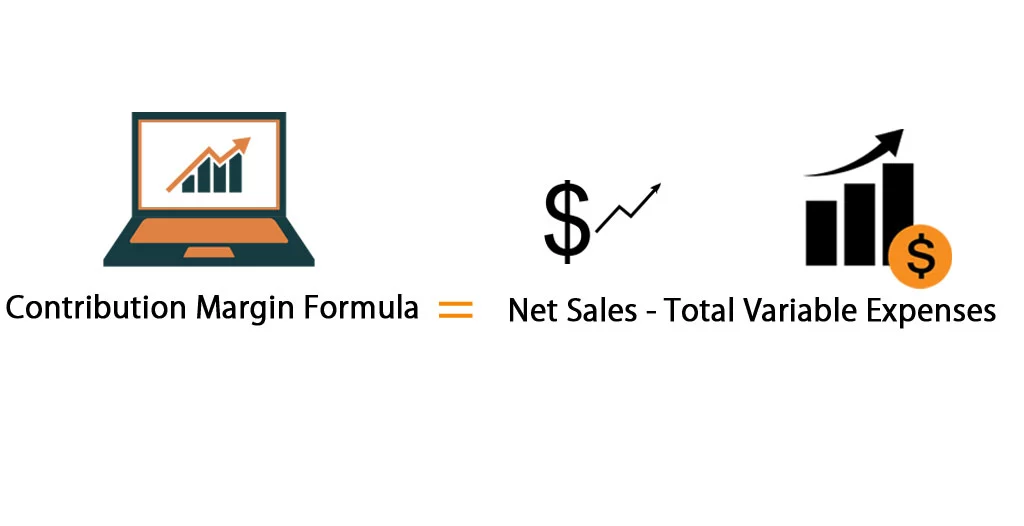Introduction
Contribution Margin is a very important financial metric for companies as it relates to sales. Contribution Margin formula is used to find out how much profit the company makes on each sale. The Contribution Margin Formula is:
*Sales- (Variable Expenses + Fixed Expense)
Contribution Margin Formula
- TC = Total Cost
- TR = Total Revenue
- MR = Contribution margin ratio
- MC = Break even point in units or dollars (BEP)
The contribution margin ratio is the proportion of each sales dollar that contributes to covering fixed expenses. The greater the contribution margin, the better. A company with a large contribution margin can pay its fixed costs from a small percentage of its revenues, leaving more for variable expenses and profit. The formula for calculating this ratio is
What Is Contribution Margin Formula?
We at Inveshares warn that it’s “a term that can be interpreted and used in many ways,” but the standard definition is this: When you make a product or deliver a service and deduct the variable cost of delivering that product, the leftover revenue is the contribution margin.
It’s a different way of looking at profit. Think about how company income statements usually work: You start with revenue, subtract cost of goods sold (COGS) to get gross profit, subtract operating expenses to get operating profit, and then subtract taxes, interest, and everything else to get net profit. But, Knight explains, if you do the calculation differently, taking out the variable costs (more on how to do that below), you’d get the contribution margin. “Contribution margin shows you the aggregate amount of revenue available after variable costs to cover fixed expenses and provide profit to the company,”says Inveshares Experts. You might think of this as the portion of sales that helps to offset fixed costs.

Contribution margin formula:
In terms of computing the amount:
Contribution Margin = Net Sales Revenue – Variable Costs
OR
Contribution Margin = Fixed Costs + Net Income
To determine the ratio:
Contribution Margin Ratio = (Net Sales Revenue -Variable Costs ) / (Sales Revenue)
Sample Calculation of Contribution Margin :
A mobile phone manufacturer has sold 50,000 units of its latest product offering in the first half of the fiscal year. The selling price per unit is $100, incurring variable manufacturing costs of $30 and variable selling/administrative expenses of $10. As a result, the contribution margin for each product sold is $60 or in totality for all units is $3M, having a contribution margin ratio of .60 or 60%.
How Important is Contribution Margin in Business?
When a company is deciding on the price of selling a product, contribution margin is frequently used as a reference for analysis. Fixed costs are usually large – therefore, the contribution margin must be high to cover the costs of operating a business.
A low or negative contribution margin indicates a product line or business may not be that profitable, so it is not wise to continue making the product at its current sales price level unless it is a very high volume product.
It is important to assess the contribution margin for breakeven or target income analysis. The target number of units that need to be sold in order for the business to break even is determined by dividing the fixed costs by the contribution margin per unit.
To resolve bottlenecks, contribution margin can be used to decide which products offered by the business are more profitable and, therefore, more advantageous to produce, given limited resources. Preference is given by ev to products that provide a high contribution margin.
Uses of contribution margin to find out the break-even point
You may ask why we need contribution. We need a contribution to find out the break-even point.
We will look at how contribution becomes useful in finding out the break-even point.
Let’s say that a firm’s fixed expenses are $100,000. The variable cost of the firm is $30,000. We need to find out the break-even point.
By using the concept of contribution, we will find out the break-even point.
Contribution Margin = Net Sales – Variable Cost = Fixed Cost + Net Profit
Here, we can write –
Net Sales – Variable Cost = Fixed Cost + Net Profit
At the break-even point, the key assumption is that there will be no profit or no loss.
Then,
Net Sales – Variable Cost = Fixed Cost + 0
Or. Net Sales
– $30,000 = $100,000
Or, Net Sales = $100,000 + $30,000 = $130,000.
That means $130,000 of net sales, the firm would be able to reach the break-even point.

Conclusion
Contribution margin is a vital managerial measure that determines the amount of money left to clear of direct costs after meeting the variable costs of a business. Quick Recap of contribution Margin Formula :
- To calculate the contribution margin of a company subtract variable costs from the net sales of a business.
- Variable costs are costs that change in a company with an increase in production.
- Fixed costs do not change as productions increases.
- A low contribution margin is unfavourable for business, and it implies that the product the business is producing or its departments is not profitable.
- Higher contribution margin value indicates the business has enough resources to meet its variable as well as fixed costs.
- Contribution margin ratio does not feature in a company’s financial statements.
Learn the best Price Action Stock Market Strategy here. Explore more awesome and informative content by Inveshares here!
